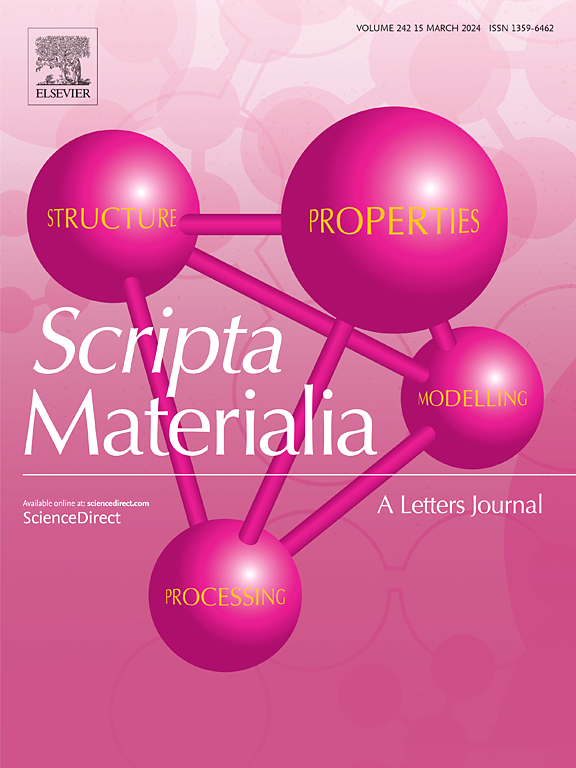Continuously adjustable metal to insulator transitions within high temperature range for La3-xBixNi2O7 layered perovskite nickelates
IF 5.3
2区 材料科学
Q2 MATERIALS SCIENCE, MULTIDISCIPLINARY
引用次数: 0
Abstract
Establishing the Ruddlesden-Popper type layered perovskite structures for rare-earth nickelates (e.g., Ren+1NinO3n+1), by alternatively inserting one ReO rock-salt layer into n layers of the ReNiO3 perovskite, sheds a light on new freedom to regulate their metal to insulator transition (MIT) properties. Herein, we demonstrate continuously regulatable MITs enabling significantly enhanced resistive switches at high temperature range of 500–560 K for La3-xBixNi2O7 (n=3), compared to conventional ReNiO3 with similar critical temperatures (TMIT). Anomalously small magnitudes in thermopowers are observed for the insulating La3-xBixNi2O7, compared to the 113-type nickelates, indicating their distinguished bi-polar transport characters. The Bi substitution results in electron localization as indicated by the near edge X-ray absorption fine structure analysis, and elevates the hole contribution to the transportation to drive the thermopower associated with their insulating phase towards positive magnitudes. Furthermore, compared to ReNiO3, the La3-xBixNi2O7 exhibits higher material stability, paving the way to their applications.

La3-xBixNi2O7层状钙钛矿镍酸盐在高温范围内可连续调节金属到绝缘体的转变
通过在 ReNiO3 包晶的 n 层中插入一个 ReO 岩盐层,为稀土镍酸盐(如 Ren+1NinO3n+1)建立了 Ruddlesden-Popper 型层状包晶结构,为调节其金属向绝缘体转变(MIT)特性提供了新的自由度。与临界温度(TMIT)相近的传统 ReNiO3 相比,我们在此展示了可连续调节的 MIT,使 La3-xBixNi2O7(n=3)在 500-560 K 高温范围内的电阻开关性能显著增强。与 113 型镍酸盐相比,绝缘的 La3-xBixNi2O7 的热功率异常小,这表明它们具有独特的双极性传输特性。近边缘 X 射线吸收精细结构分析表明,Bi 取代导致电子局域化,并提高了空穴对传输的贡献,从而推动其绝缘相的热功率趋向正值。此外,与 ReNiO3 相比,La3-xBixNi2O7 表现出更高的材料稳定性,为其应用铺平了道路。
本文章由计算机程序翻译,如有差异,请以英文原文为准。
求助全文
约1分钟内获得全文
求助全文
来源期刊

Scripta Materialia
工程技术-材料科学:综合
CiteScore
11.40
自引率
5.00%
发文量
581
审稿时长
34 days
期刊介绍:
Scripta Materialia is a LETTERS journal of Acta Materialia, providing a forum for the rapid publication of short communications on the relationship between the structure and the properties of inorganic materials. The emphasis is on originality rather than incremental research. Short reports on the development of materials with novel or substantially improved properties are also welcomed. Emphasis is on either the functional or mechanical behavior of metals, ceramics and semiconductors at all length scales.
 求助内容:
求助内容: 应助结果提醒方式:
应助结果提醒方式:


